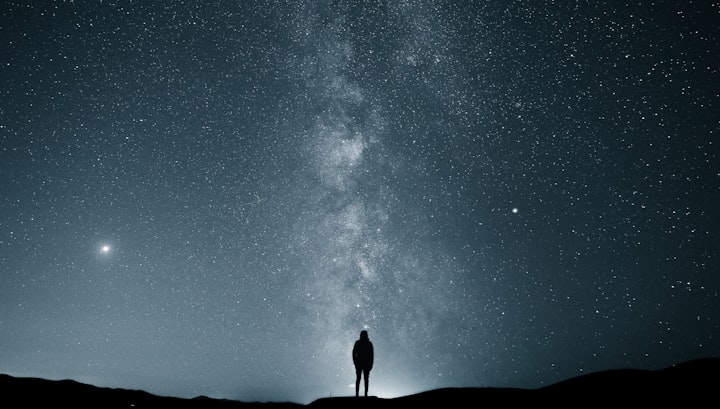UNVELING THE WONDERS OF ASTROPHOTOGRAPHY
Capturing Cosmic Spectacles

UNVELING THE WONDERS OF ASTROPHOTOGRAPHY - Capturing Cosmic Spectacles
Greetings,
The skill of photographing the celestial wonders that fill our night sky, known as astrophotography, sits at the nexus of science and art and provides a breath-taking look at the size of the universe. Astrophotography is becoming a more and more popular hobby that enables fans to discover and share the beauty of the universe, from the captivating dance of stars to the vivid hues of far-off nebulae. This essay sets out on a celestial exploration, revealing the mysteries, methods, and breathes taking cosmic displays of astrophotography.
The Night Sky's Allure
1. Cosmic Canvases. The infinite constellations, nebulae, and galactic tapestry. The tremendous beauty concealed in the night sky's shadowy reaches.
2. Celestial Events. Meteor showers and eclipses, with their captivating charm. The planets' dance and the comets' fleeting brightness.
3. The Majesty of the Milky Way. The bright ring of our galaxy that crosses the sky. Methods for using astrophotography to capture the fine details of the Milky Way.
Crucial Astrophotography Equipment
1. Lenses and Cameras. Selecting the appropriate camera for night photography. Quick lenses are essential for photographing faint celestial objects.
2. Robust Tripods and Mounts. The significance of stability for extended exposure astrophotography. Mount types appropriate for varying requirements in celestial tracking.
3. Specialized Filters. The role of light pollution filters in urban astrophotography. Narrowband filters for separating out particular wavelengths that come from spacecraft.
4. Photography of Astrophotography. Investigating telescopic options for specialized deep-sky imaging using telescopes. Methods for merging camera and telescope arrangements.
Methods and Conditions for Stellar Achievement
1. Long-Exposure Imaging. Realizing the significance of prolonged exposure periods. Adjusting exposure duration to record features that are both bright and subtle.
2. Polar Alignment. The importance of precise polar alignment in the tracking of astronomical objects. Equipment and techniques for polar alignment with accuracy.
3. Focusing in the Dark. Methods to attain a sharp focus on objects in the sky. Employing electronic focusing aids and bahtinov masks.
4. Image stacking and processing. The advantages of combining several exposures in order to lower noise. Post-processing software tools and methods for astrophotography photos.
Marvels of Deep Space
1. The ethereal beauty of planetary, emission, and reflection nebulae. Famous nebulae, such as the Lagoon Nebula and Orion Nebula, those are ideal for astrophotography.
2. Star Clusters. Globular and open star clusters are enthralling celestial gems. Methods for photographing star clusters with a high density of detail.
3. Galaxies. The difficulties and benefits of taking pictures of far-off galaxies. Notable galaxies to target and tactics to capture their spiral arms and structures.
4. Solar System Astrophotography. Taking pictures of our solar system's planets and moons. How to take pictures of the Moon, Jupiter, Saturn, and other celestial bodies.
Photography of Astro-Landscapes
1. Blending Heavenly and Earthly Elements. Developing striking compositions that combine terrestrial scenes with the night sky. Adding foreground components to improve astrophotography pictures.
2. Time Dilation Producing dynamic time-lapse sequences of celestial occurrences is the first step in astrophotography. Advice on how to organize and take time-lapse pictures in various sky conditions.
Resources and Communities for Astrophotography
1. Use of online forums and platforms. Involving astrophotography communities in information exchange. Well-known websites that display and evaluate astrophotography projects.
2. Photo astronomy Events and Workshops. Taking part in practical workshops to improve abilities. Going to star parties and gatherings to meet other fans.
3. Educational Materials. Books, tutorials, and online classes for learning astrophotography. Educational outreach initiatives designed to familiarize novices with the practice of astrophotography.
Astrophotography's Prospects
The impact of technological breakthroughs on the field of imaging technology is the first advancement in this area. The possibilities of new software tools, telescopes, and imaging sensors.
1. Contributions from Citizen Science. The part played by amateur astrophotographers in advancing science. Illustrations of citizen scientific initiatives that use astrophotography.
2. Maintaining Dark Skies. Fighting to keep the natural darkness intact in the face of light pollution. The need of programs to preserve celestial visibility and dark sky reserves.
In summary
Astrophotography is more than just a hobby; it's a trip into the sublime and an enlightening and visually striking method to interact with the universe. Astrophotography shows the world's beauties to everyone, from freezing the planets' dance against the Milky Way to catching the tiny wisps of far-off nebulae. The cosmos' tapestry gets more complicated and the celestial canvas gets richer as technology and the astrophotography community evolve.





Comments (2)
Capturing the dance of planets against the Milky Way brings the universe to life in every exposure,
Whoaaa there's like so much to it but here I am taking a photo of the moon with my phone, lol